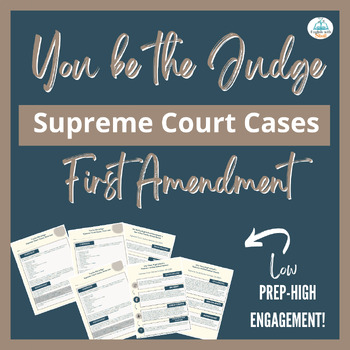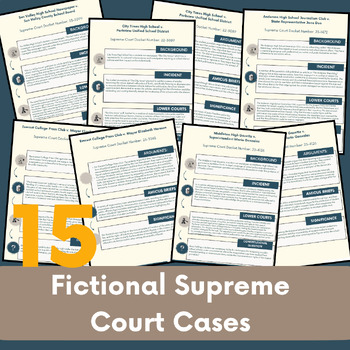Student Press Law & Ethics; Supreme Court Cases; Copyright BUNDLE
- Zip
Products in this Bundle (3)
Description
⭐️ Press Law and Ethics Unit:
This is a comprehensive student press law unit plan that is designed to walk students through an introduction to the First Amendment, Hazelwood, and landmark Supreme Court cases, and their impact on student press rights. Students will also learn about ethical considerationslike libel, confirmation bias, fake news, public figures vs. private citizens, image tampering, and copyright.
This complete 2-3 week unit plan includes detailed and engaging activities, printables, examples, quizzes, and a final assignment; everything you need to teach unit!
What students will learn:
This unit is divided into 8 sections, each with a Powerpoint and at least one worksheet or activity to engage learning. There are also 2 quizzes and a couple different final assessments.
⭐️ You Be the Judge: Supreme Court Cases
Help your students apply their understanding about the First Amendment, landmark Supreme Court cases, and their Constitutional significance by engaging in this fun authentic project-based-learning activity. This highly engaging activity asks students to put themselves in the shoes of a Supreme Court judge by evaluating a fictional Supreme Court case and drawing conclusions based on research.
➡️ There are 15 fictional cases on the following topics:
- Anonymous sources
- Controversial topics
- Data privacy
- Editorial independence
- Libel (public figures and private citizens)
- Misquoting sources
- Photography
- Prior review
- Private schools
- Provocative content in theater
- Slander
- Social media
For each case, students will be provided:
- Background
- A description of the incident
- Lower court decisions
- A constitutional question this case addresses
- Arguments on both sides
- Amicus briefs
- Significance of the case as it relates to the First Amendment
*A list of website links and resources are included so students have a starting point!
⭐️ Copyright, Creative Commons, Fair Use & Public Domain
With so much digital content readily available online, it's hard to navigate what is safe to use, reproduce, and reuse. This easy-to-use pack includes everything you need to help your students navigate intellectual property guidelines including specifics on copyright law, Creative Commons, Fair Use Doctrine, and Public Domain.
Each of the resources in this product help students learn the basics of copyright and how to accurately use and cite content. Students will learn about photos, videos, and even music!





